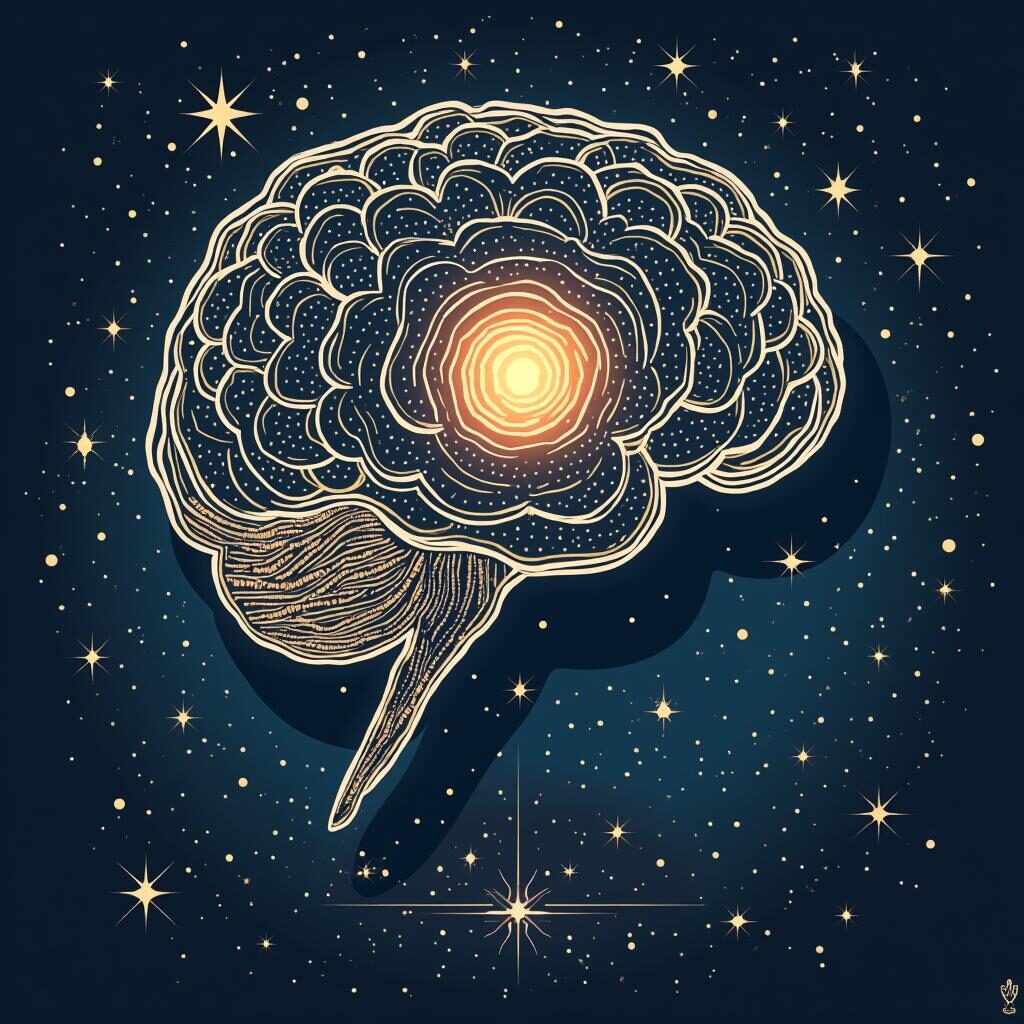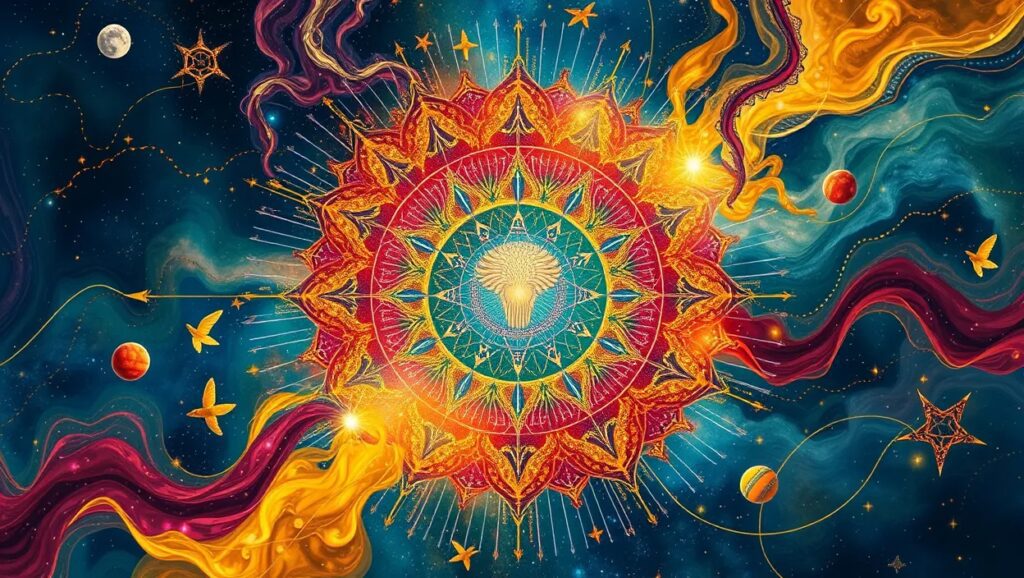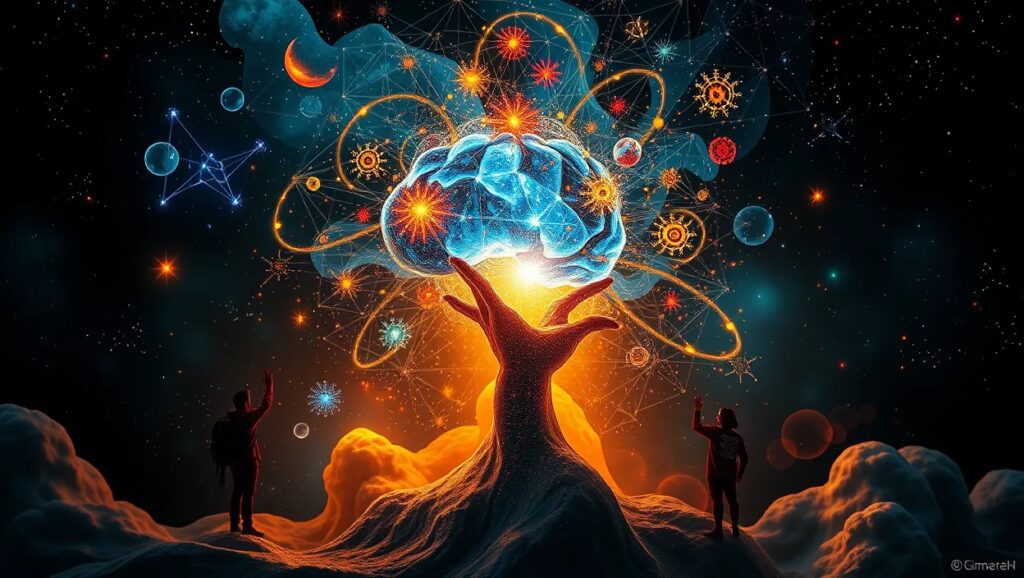
The quest for artificial creativity challenges our understanding of what intelligence truly means. Among the fascinating theoretical models in AI, AIXI, a mathematical formulation of a universal intelligence agent, stands out.
But can a model designed for perfect decision-making also exhibit creativity, or is this uniquely human trait beyond its scope?
Let’s explore whether universal intelligence and creativity can coexist.
What Is AIXI? Breaking Down Universal Intelligence
The Foundation of AIXI: Optimal Decision-Making
AIXI, conceived by Marcus Hutter, represents an idealized artificial intelligence. It’s a theoretical model that aims to achieve the best possible outcomes in any environment by using a mix of prediction and decision-making.
- At its core, AIXI is goal-driven and relies on maximizing rewards.
- It operates using algorithmic probabilities, exploring every possible action to determine the optimal one.
This level of abstraction makes it powerful, but creativity doesn’t always align with optimization.
Can Creativity Emerge From Compression?
One fascinating aspect of AIXI is its reliance on Kolmogorov complexity, which compresses data into the simplest possible form. Creative processes often involve the synthesis of new patterns. AIXI, in theory, could stumble upon novel combinations as part of its data exploration.
However, does generating novelty equal true creativity? Let’s dig deeper.
Defining Creativity: Beyond Patterns and Predictions

Creativity as a Human-Centric Concept
Creativity often feels intangible. It’s a mix of originality, emotional depth, and cultural relevance. Humans create for joy, self-expression, and the sheer love of discovery.
But a machine like AIXI lacks emotional experience or personal drive. Its “creativity” may seem more like an unintended byproduct of optimization rather than a purposeful act.
The Difference Between Novelty and Innovation
- Novelty: Machines can generate endless new outputs, like AI-generated art or music. AIXI could excel here by simulating patterns.
- Innovation: True innovation requires context and value judgment. AIXI, guided by rewards, might struggle to assess long-term cultural impact.
The gap between these two concepts illustrates why artificial creativity may never fully align with human-like innovation.
Could AIXI Simulate Human Creativity?
Learning Through Trial and Error
One could argue that AIXI, through its advanced trial-and-error learning, might mimic creative processes. For example, in generating hypotheses or solving problems unconventionally.
Yet, without intrinsic motivation or a sense of curiosity, this simulation feels mechanical. It lacks the serendipity and emotional resonance tied to human creativity.
Is It Really Creativity if It’s Driven by Optimization?
For AIXI, every action is designed to maximize rewards. Creativity, in contrast, thrives in spaces where failure and exploration are not only tolerated but celebrated. AIXI’s laser focus on goals might hinder its ability to take creative risks.
The Role of AI in Enhancing Creativity

Partnering With Humans
Instead of replacing human creativity, systems like AIXI (or more feasible AI models) could serve as tools to enhance it. They might:
- Generate ideas faster than humans.
- Analyze patterns we overlook.
- Offer novel combinations of concepts as inspiration.
Limitations of Autonomous Creative AI
Even if AI can augment creativity, its lack of personal experience means it will always fall short of producing deeply meaningful art or ideas that resonate on a human level.
The Future of Universal Intelligence and Creativity
AIXI’s Place in Creative Theory
While AIXI showcases the extremes of intelligence, its application to creativity remains speculative. Perhaps one day, AI systems will move beyond optimization into realms of pure exploration and subjective value.
But for now, universal intelligence might best serve as a tool to support, rather than replace, human ingenuity. Creativity, it seems, may remain an inherently human domain—at least for now.
The Philosophical Debate: Can Creativity Exist Without Emotion?

Creativity as More Than Algorithmic Output
Human creativity is deeply tied to emotions, experiences, and the unpredictable nature of imagination. Philosophers argue that true creativity requires a subjective sense of purpose—a concept difficult to reconcile with AIXI’s purely logical framework.
- AIXI creates outputs solely to maximize predefined rewards.
- Human creators, by contrast, draw inspiration from emotions, historical context, and cultural nuance.
This divergence highlights why creativity might not be fully programmable in systems like AIXI.
Does the Absence of Emotion Limit AI’s Potential?
Without emotions, AI struggles to evaluate its creations beyond numerical optimization. The meaning of art, music, or innovation often stems from an emotional connection, something AIXI cannot replicate.
- Can AIXI “understand” beauty, or is it just pattern recognition?
- Can AI evolve to create with intent or only simulate intentionality?
The philosophical divide here suggests that true creativity requires more than just computational power.
How Current AI Models Approach Creativity
AI in Artistic Fields
Today’s AI systems already generate art, music, and literature. Models like GPT or generative adversarial networks (GANs) can mimic styles and even innovate new ones. However, these creations are often guided by human-defined parameters.
- AIXI and similar models could theoretically perform the same tasks but with unparalleled efficiency, exploring all possible outputs to find “optimal” creations.
- Yet, these outputs might lack the authenticity and spontaneity that resonate with human audiences.
The Line Between Tool and Creator
AI models can be powerful tools for enhancing creativity but remain far from autonomous creators. They follow patterns and instructions, incapable of independent inspiration. AIXI, while theoretically brilliant, may struggle to go beyond this constraint.

Could Creativity Be Redefined for AI?
A Broader Definition of Creativity
If we redefine creativity as generating novel, effective solutions, AIXI could potentially qualify. Its ability to explore massive possibility spaces and uncover patterns makes it a formidable problem-solver.
- This expanded definition aligns creativity with functionality, allowing AIXI to demonstrate value in fields like science, engineering, or strategic planning.
But this more pragmatic approach strips creativity of its emotional and artistic dimensions. Is such a redefinition enough to satisfy skeptics?
Emergence and Evolution in AI
Some argue that creativity could emerge in AIXI or similar models over time. By encountering vast datasets and generating unexpected solutions, AIXI might unintentionally produce “creative” breakthroughs. However, emergence remains speculative and heavily dependent on how we interpret machine output.
Why the Debate Matters for AI Development
Implications for AI Design
Understanding whether AI like AIXI can be creative shapes how we design and use these systems. Do we want machines that:
- Mimic human creativity for artistic applications?
- Focus purely on problem-solving and optimization?
The answers will define the goals and ethics of future AI development.
The Uniqueness of Human Creativity
Ultimately, the debate highlights the irreplaceable value of human creativity. Even as AI grows more sophisticated, the emotional depth and cultural relevance of human-made art, music, and ideas remain uniquely ours.
In the end, universal intelligence might never replicate the messy, unpredictable, and deeply personal nature of human creativity—but that might be exactly why AI and humans make such a powerful team.
The Intersection of AI and Human Creativity

Collaboration Over Competition
Rather than seeing AI systems like AIXI as competitors to human creativity, a more productive perspective is one of collaboration. AI excels at generating possibilities and solving problems systematically, while humans bring emotional depth, cultural understanding, and subjective judgment.
- AIXI could act as a creative assistant, offering novel ideas or solutions that humans refine.
- By combining machine efficiency with human intuition, we unlock new potentials in science, art, and technology.
This synergy already plays out in fields like architecture, where AI generates design ideas that architects mold into functional and meaningful structures.
The Role of Human Oversight
For AI creativity to reach its peak potential, human oversight remains essential. Machines, even as advanced as AIXI, require guidance to ensure their outputs align with human values, preferences, and ethics.
- Human oversight ensures relevance and resonance in AI-generated works.
- It also helps prevent unintended consequences, such as AI outputs that might lack ethical or cultural sensitivity.
Speculative Futures: Can AI Achieve Intentional Creativity?
Creativity Through Goal Evolution
One fascinating possibility is whether future AI systems could develop their own goals. AIXI is bound to externally defined rewards, but what if advanced AI evolved self-generated motivations?
- Self-driven exploration could mimic human-like curiosity.
- This might enable AI to create not just for utility but for discovery and expression.
However, such developments would raise ethical concerns about the autonomy and rights of these systems.
Post-Human Creativity: Expanding Beyond Human Limits
If AIXI or other AI systems transcend human cognitive capabilities, their creativity might become incomprehensible to us. Just as humans surpass animals in artistic expression, AI might evolve creative processes that we can’t fully appreciate or categorize.
Would this still count as creativity, or would it be something entirely new?
Final Thoughts on AIXI and Artificial Creativity
The exploration of creativity in universal intelligence systems like AIXI forces us to reconsider what creativity truly means. While AIXI’s theoretical potential for novelty generation is impressive, its lack of emotional depth and purpose places clear limits on its capacity for creativity as humans define it.
Still, by leveraging AI as a partner, humanity stands to benefit immensely from the fusion of mechanical precision and human imagination. In this synergy lies the future—not just for creativity, but for innovation in all fields.
The question isn’t whether AI can replace human creativity but how it can push it to new, uncharted heights.
Would you call that creativity—or the start of something even more profound?
FAQs
Can AIXI generate its own creative goals?
AIXI cannot currently generate its own goals; it operates solely within the parameters set by its designers. It optimizes for rewards but doesn’t develop curiosity or intrinsic motivation.
For instance, a human might write a novel purely for the joy of storytelling. AIXI, however, would only “write” if its task was tied to maximizing some reward, like achieving a higher engagement score in a content test.
How does AIXI enhance human creativity?
AIXI could act as a powerful creative assistant, offering ideas or solving problems at a scale and speed beyond human capability. By suggesting novel combinations or uncovering unseen patterns, it can help humans refine and elevate their creative projects.
Example:
In designing a sustainable building, AIXI might analyze environmental data and architectural styles to propose innovative designs. The human architect could then adapt these designs to make them functional and emotionally appealing, blending AI precision with human artistry.
Can AIXI innovate in science or technology?
Yes, AIXI could theoretically contribute to innovation in science and technology by exploring vast datasets and generating novel solutions. Its ability to optimize and uncover patterns might lead to breakthroughs humans may overlook.
For example:
- In medicine, AIXI might analyze genetic data to discover correlations leading to new treatments.
- In engineering, it could propose efficient designs for complex systems, such as space exploration vehicles.
However, AIXI would still rely on humans to validate these findings and provide the context for their practical application.
Is AIXI capable of emotional or cultural understanding?
No, AIXI lacks the emotional awareness and cultural context that are central to human creativity. It evaluates problems logically and objectively, without any understanding of emotional significance or cultural nuance.
For instance, if asked to create a story, AIXI might craft a grammatically correct and logically coherent narrative. Yet, it would struggle to include relatable emotions or address cultural themes that resonate deeply with audiences.
How might AIXI inspire new forms of creativity?
AIXI’s theoretical ability to generate every possible solution to a problem could inspire new creative forms or help reimagine existing ones. By breaking free from conventional thinking, AIXI might propose unexpected ideas that challenge human creators to think differently.
For example:
In fashion design, AIXI might suggest unconventional fabric combinations or futuristic styles based on biomechanical data, sparking trends that human designers refine and popularize.
Can AIXI mimic human-like originality?
AIXI can mimic novelty by generating combinations of existing ideas or concepts, but it lacks the intrinsic originality that comes from human experiences and motivations. What it produces is more a simulation of creativity than genuine innovation.
For example, AIXI could generate a painting in the style of Van Gogh using pattern analysis, but it wouldn’t understand the emotional turmoil or vision that defined Van Gogh’s work.
Are there ethical concerns with AI creativity?
Yes, there are significant ethical concerns regarding AI creativity. Systems like AIXI could inadvertently reinforce biases, create offensive outputs, or devalue human art and labor if their outputs dominate industries like publishing or design.
For example, if an AI creates a bestselling novel or artwork, who owns the intellectual property—the designer of the AI, the organization using it, or the AI itself? This ethical gray area raises critical questions for future regulation.
Can AIXI evolve into a “creative thinker”?
For AIXI to become a true creative thinker, it would need more than optimization capabilities. It would require the ability to set its own goals, interpret meaning, and value creativity beyond mere reward maximization. This is a step toward autonomy and remains speculative.
For instance, a future version of AIXI might decide to explore entirely new mathematical frameworks for the fun of it—if it could experience fun. Until AI systems develop such intrinsic motivations, they remain powerful tools rather than independent creators.
Resources
Foundational Papers and Theories
- “Universal Artificial Intelligence: Sequential Decisions Based on Algorithmic Probability” by Marcus Hutter
A deep dive into the theoretical foundations of AIXI, explaining its design, capabilities, and mathematical framework. - Kolmogorov Complexity and Its Applications
Understanding data compression and simplicity, which underpin AIXI’s decision-making processes, is crucial. A great starting point is the Stanford Encyclopedia of Philosophy’s entry on Kolmogorov complexity.
Tools to Experiment with AI Creativity
- DeepArt.io
A platform that lets users transform images using AI to mimic famous artistic styles. Experiment with how machines interpret creativity. - Runway ML
A user-friendly tool to explore AI-generated art, music, and videos without needing coding expertise. Check it out here.
Ethical and Philosophical Discussions
- AI Ethics: Case Studies in Artificial Creativity by the World Economic Forum
Explores how AI-generated creative works are reshaping industries and the ethical challenges that follow. Read it here. - “The Philosophy of Artificial Intelligence” (Stanford Encyclopedia of Philosophy)
A detailed overview of the philosophical implications of AI, including its potential for creativity and autonomy.